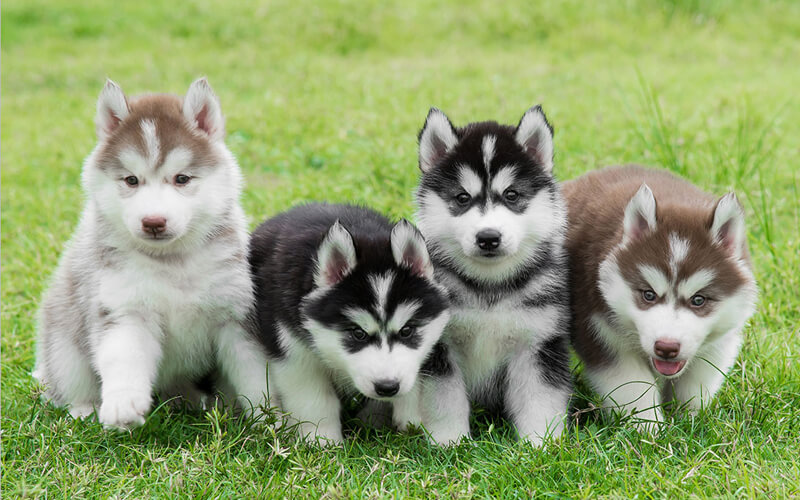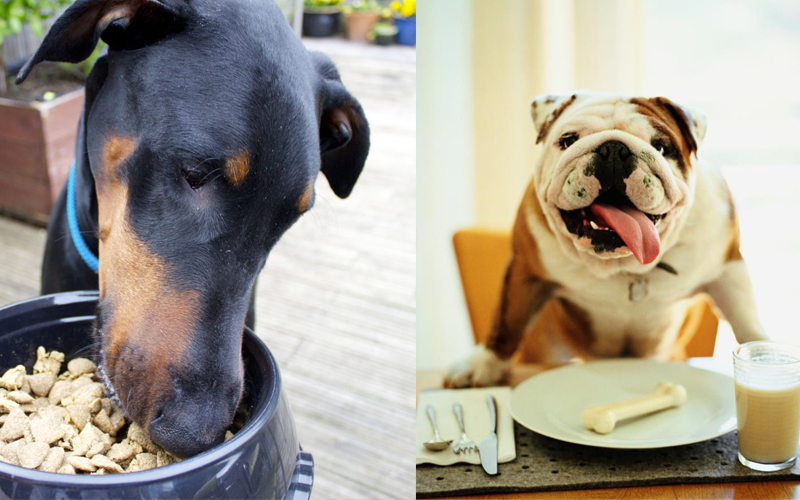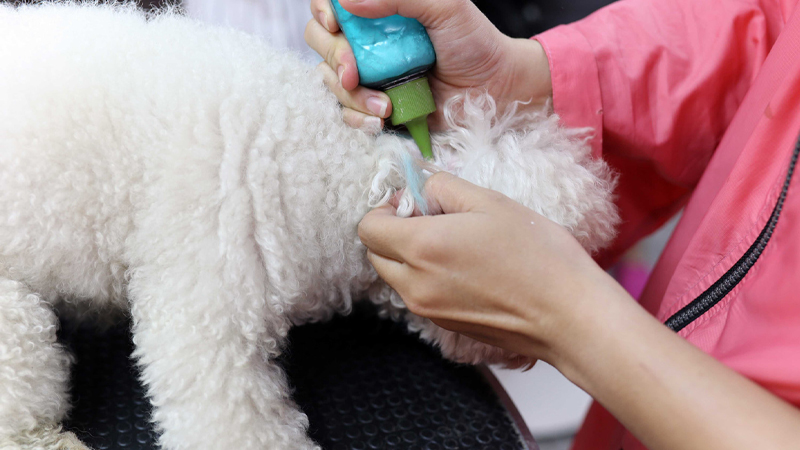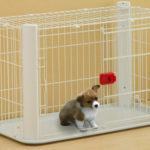When it comes to dog care and training, there’s a lot to learn. But once you master the techniques, your furry friend will thrive and grow strong and healthy. So, what do first-time dog owners need to know about choosing a breed, caring for their pup, and training them? Let’s dive into the A-Z of dog care for beginners!
1. Choosing the Right Breed and Finding a Reputable Breeder
Selecting a Dog Breed
One important consideration when choosing a dog breed is its appearance. Some breeds that are known for their good looks include Border Collies, Rough Collies, and mini Collies. These dogs are not only attractive but also intelligent, easy to train, and loyal companions.
If you’re looking for a larger dog, breeds like Samoyeds, Alaskan Malamutes, and Siberian Huskies are impressive and playful, yet gentle giants. On the other hand, if you prefer a smaller companion, Toy breeds such as the Phốc or small Poodles are adorable and make great lapdogs.
 Choosing the Right Breed
Choosing the Right Breed
Beyond the physical appearance, it’s crucial to consider the dog’s health, temperament, and whether they match the advertised description. This is essential as it will determine the overall well-being of your furry friend in the long run.
Finding a Reputable Breeder
It’s best to source your puppy from a large, reputable pet farm or directly from a trusted breeder. Alternatively, you can import your desired breed, ensuring a clear lineage and origin.
2. Health Check Before Bringing Your Dog Home

Before welcoming your new pup home, it’s advisable to take them to a nearby veterinary facility for a general health check-up and to receive personalized care advice from a professional.
3. Feeding Your Dog
To avoid digestive issues when transitioning your dog to a new diet, gradually adjust their meals and ensure a balanced nutrition intake. Specifically:
Ensure their diet is rich in protein, healthy fats, carbohydrates, and natural vitamins. Limit processed foods, dairy, high-fat foods, and animal organs, as these can contain toxins that may lead to cancer.
Divide their daily food intake into 3-4 smaller meals, each accompanied by a drink of water. This aids digestion and keeps your dog hydrated. Remember to regularly clean their food and water bowls to maintain hygiene and prevent food-borne illnesses.

If your dog experiences health issues or displays unusual behavior, such as loss of appetite, lethargy, persistent diarrhea, or vomiting, stop feeding them and seek veterinary assistance immediately.
Avoid feeding your dog spoiled or leftover human food, garbage, or waste products.
Never feed your dog chocolate, as it contains Theobromine, a stimulant that can be harmful to their nervous system, blood pressure, and heart.
4. Grooming and Hygiene for Dogs
Regular Trimming and Brushing
A dog’s coat is an important aspect of their overall appearance and requires regular care. Brushing their fur helps remove loose hair, dirt, and potential parasites.

Start by preparing a warm bath and thoroughly wetting your dog’s coat. Apply a suitable dog shampoo and gently massage it into their fur. Rinse thoroughly, then use a soft towel to dry them off. Gently detangle any knots and thoroughly brush their coat.
Check out our recommended top dog shampoos that are popular among pet owners!
Ear Care

Begin by moistening a cotton ball and gently cleaning the outer and inner ear, being careful not to damage the eardrum. If your dog frequently scratches its ears, it may indicate an ear infection or the presence of parasites, so a visit to the vet is recommended.
Discover our selection of effective ear cleaning solutions for your furry friend!
Dental Care

Maintaining good oral hygiene is essential for your dog’s overall health. Choose a soft-bristled toothbrush to avoid irritating their gums. Gently open their mouth, lift their lips, and carefully brush their teeth and gums.
Consult with your local pet supply store for recommendations on suitable toothbrushes and dog-safe toothpaste.
5. Training Your Dog
Dog training requires dedication and patience. However, with consistency and positive reinforcement, you can successfully teach your dog basic commands at home.
Teaching Your Dog to Sit
Prepare a small portion of your dog’s favorite treat. Hold the treat above their head, just out of reach, and say, “Sit” while gently patting their rump. Encourage them to sit and maintain the position for 10-15 seconds.
Teaching Your Dog to Stand

When your dog is lying down, give the command “Stand” and gently help them up by placing your hands under their belly and lifting slightly. Practice this command several times a day to reinforce the behavior.
Teaching Your Dog to Lie Down
Similarly, give the command “Lie down” and gently press on their rump and shoulders to guide them into the desired position. With repetition, your dog will learn to associate the command with the action.
Recall Training
Use treats to lure your dog towards you, or simply call their name and gently pull on their collar or leash if they are wearing one.
With more advanced training, you can teach your dog tricks like fetching items, walking on their hind legs, shaking paws, maintaining balance on a motorcycle, and even attacking and defending on command.
Additionally, it’s important to train your dog to relieve themselves in a designated area to avoid accidents in the house.
6. Things to Avoid When Caring for Your Dog
There are several things to keep in mind when it comes to your dog’s health and well-being:
Unsuitable Foods
– Spoiled, cold, or leftover food of unknown origin.
– Limit the consumption of animal organs, such as chicken or pork liver, raw eggs, and fatty meats.
– Avoid sweets and stimulants like chocolate.

Health and Lifestyle Considerations
After bringing your dog home, ensure they receive the necessary vaccinations, such as the Care and Parvo vaccines. Regular exercise and outdoor walks are also crucial for their development and overall health.
In conclusion, we’ve covered the A-Z of dog care for beginners. With this knowledge, you can confidently welcome a furry friend into your life and provide them with the love and care they deserve.
Further Reading:
>>
>>
>>
How to Restore the Pristine Beauty of Your Dog’s Coat: A Guide to Removing Yellow Stains from White Fur
White-furred dogs are indeed prone to yellowish discoloration and stains. There are several effective methods to combat this issue and keep your dog’s coat pristine. Specialized shampoos formulated to address discoloration can work wonders, and regular grooming, including beard care, is essential to maintaining a bright, white coat.
The Ultimate Guide to Basic Dog Care for New Paw-rents
Dogs are man’s best friend and it’s easy to see why. These loyal, loving creatures have a special place in our hearts and homes. If you’re thinking of welcoming a furry friend into your life, it’s important to get to grips with the basics of dog care. So, if you’re new to the world of dog ownership, this guide is for you!
Have You Been Unknowingly Breaking These Dog Care Taboos?
Dogs are man’s best friend, and it’s easy to see why. These loyal, loving, and intelligent animals have captured the hearts of families worldwide, becoming beloved pets and integral members of our homes. But, with great paw-wer comes great responsibility; there are some dos and don’ts that every dog owner should know to ensure a harmonious and healthy life with their furry friend.






































